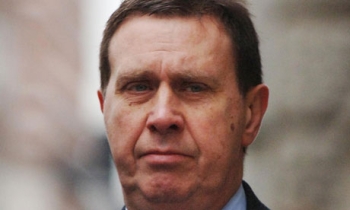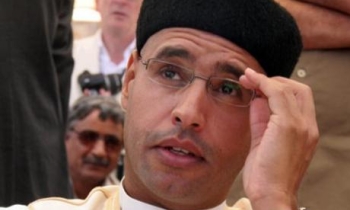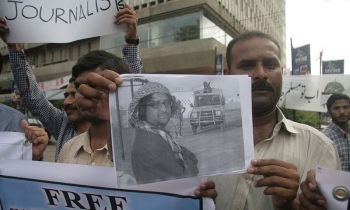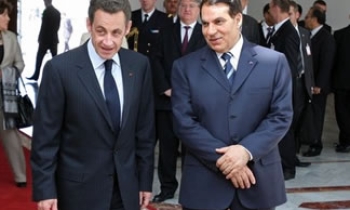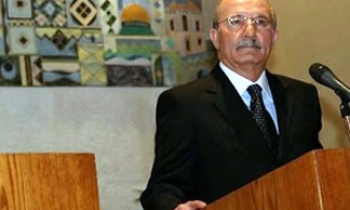The fall of Howell Raines was riveting to cover but hard to watch. And with a little distance, some aspects of the story become clearer. Among them is the realization that Jayson Blair was just a supporting player.
Exactly five weeks passed between the resignations of Blair and Raines, but the discovery of the reporter's deceptions wasn't the first act in the drama. In retrospect, it was the spiking of two sports columns six months earlier that marked the beginning of the end for Raines and managing editor Gerald Boyd. Yes, those columns – by Harvey Araton and Dave Anderson, both of whom differed with Times editorials on the Masters Tournament at the men-only Augusta National Golf Club – eventually did run in amended form. But outrage within The New York Times ran so high, and was expressed to me so freely by reporters and editors at the paper, that I should have recognized the stirrings of a major revolt.
At first, in fact, I didn't even believe the story. Since joining the New York Daily News in the summer of 2000 as a media reporter, I'd listened to many laments about Raines's hard-handed, my-way management style. But when a source phoned me back after an exchange on another Times story to say, "By the way, I heard a column by Harvey Araton was spiked," I scribbled a note and laid it at the side of my desk. Something to do with editorials. But, nah, couldn't be; a Times editor killing a column in the name of ideological alignment?
One of those holy shit moments – "It was decided by the editors that we should not argue with the editorial page." I acted on the supposed tip only hours later, almost sheepishly, running it by another source who might know a thing or two. This one paused – it was one of those holy shit moments – before telling me I had only one-half of the story. I kept the news to myself until after I reached Anderson at home in New Jersey. "That's right, my column didn't run," the veteran sportswriter told me, without hesitation and on the record, as if he had been waiting for the call. "It was decided by the editors that we should not argue with the editorial page." TIMES EDITORS KILL 2 COLUMNS IN AUGUSTA RIFT was the thirty-six-point head in the News on December 4. Speaking also for Raines, who was out of the country, Boyd tried to explain why the columns had been pulled: "Intramural quarreling of that kind is unseemly and self-absorbed." It did not go over well. For days afterward, staffers complained that they didn't know what had happened, and they found the official explanation flawed and arrogant.
This was the first prolonged rumbling about the Times's newsroom management. It would grow to a rebellious roar when the details of Blair's breathtaking deceit and the conflicted oversight of top editors became known. Tracking the impact of staff unrest and bungled supervision of Blair on the heart, soul, and future of the Times would consume my time and energy like no other story in twenty-five years as a newspaperman.
Reporting on the news media summons almost self-conscious care and caution, because the primary audience for the stories includes the most discerning readers, fellow journalists who may be studying the copy with an insider's sense of the business and the circumstances and the players involved. Yet, as in any tense story, the drama at the Times also offered sources with a range of motivations – from the anonymous callers who sounded as if they wanted to settle old scores to the high-minded professionals who agreed to share what they knew while wrestling with grave concerns about how the Times might be altered by the crisis.
I wrote my stories carefully to conceal the fingerprints of sources, most of whom spoke only on background or not for attribution. They knew things and heard other things, but were generally careful to distinguish between the two. No two sources were alike; some I would not recognize on the street and probably never will. My confidence stemmed from the faith I had in them and the belief that they primarily wanted to help tell a story from the inside that the Times itself was covering only intermittently. None of them saw Raines's reign ending anytime soon, and only a few expressed any personal disregard for him or Boyd. Amid the mordant humor that rolls through the ranks of the news business, and despite the new wave of cynicism about the media that rose in the Times tempest, I identified an admirable virtue in these sources that I characterized as "corporate patriotism." The Times was blessed to have these people. They shared an anguish over insults to a paper they were fiercely proud to work for, and were now horrified to find being ridiculed, not only by the usual political detractors, but by Jon Stewart and David Letterman. They were troubled that blunders in management, a seeming lack of accountability on high, were now red meat for outspoken ideologues of all stripes, who would delight in the paper's misfortunes.
Still, one of the surprises in covering a story about a great journalistic institution was the wealth of bad information floating around. After the Times published its famous four-page chronicle of Blair's troubled history, on May 11, inviting readers to point out further discrepancies in any of his stories, I kept hearing a litany of familiar names who supposedly were "under investigation," like Blair. These potentially ruinous allegations – hearsay, really – circulated so widely that it's worth trumpeting even at this late date that Rick Bragg was the only other reporter to fall. Bragg resigned five days after the Times revealed that a free-lancer had done much of the reporting and interviewing for one of Bragg's stories last year, and should have shared the byline. Various staff members also told me of major investigations into the Times that were about to pop in the Los Angeles Times, The Washington Post, and other news outlets – but never did. At one hot moment in May, word spread that the Newsweek bloodhound Michael Isikoff had sniffed out a big scoop. He wasn't even on the story. At another point, Bill Kovach, Raines's former boss in the Washington bureau, was returning to the Times, seemingly in a peace-making role as the paper's first ombudsman. Also untrue.
If I had five bucks for each groundless piece of information, I could treat a party of four to dinner at Lutèce. It seems to me that, as more reporters jumped on the story and peppered the Times's New York and Washington newsrooms with calls, some of the people who received those calls would then describe to colleagues the nature of the queries. They probably did so with melodramatic flourish, causing fear and speculation to run wild. On some days, I half-expected to be told that Raines had been on the grassy knoll in Dallas. But some leads that seemed far-fetched had to be checked. For example, I was asked by an editor to act on a tip that the publisher, Arthur Sulzberger, Jr., was about to replace Raines with Thomas Friedman, the paper's influential foreign-affairs columnist. Reached quickly in Washington, Friedman shot the tip dead, expressed support for Raines, and said he thought the editor was doing a great job. He then told the Times spokeswoman Catherine Mathis of the query he had just received from the Daily News, prompting her to ask me with concern if a Friedman candidacy would be given credence in the next day's News. Not at all, I assured her. (Both the Times and those who cover the Times, by the way, were lucky to have Mathis in the p.r. slot and not a spin doctor who might have complicated matters by barring the door against hard questions. Mathis was informed in her answers to questions. And more important, she spoke with authority for the Times, Raines, and Sulzberger.)
The days ran long, mainly because I couldn't start writing most stories until 5 or 5:30. I got home at 9:30 p.m., sometimes later, and often found Times-related phone messages with the afternoon mail. Bragg's suspension for misusing the stringer broke on May 23, a day I was supposed to take off to attend a brother's wedding at the Jersey shore. I filed a story from home, was back on the phone in bumper-to-bumper traffic on the Garden State Parkway, discussed a new lead with my editor after reaching my hotel room, and later drew a disbelieving stare from my brother when I stepped away to take one more call from the desk as he was just about to walk down the aisle. On the one hand, focused totally on a sprawl of a story, one that tantalized many of my News colleagues and drew them to my desk throughout the day to seek updates and offer tips of their own, I couldn't see beyond the next deadline. "Real life" seemed a dim memory. At the same time, I was keenly aware that the biggest media story in years, judging from the number of links packed into Romenesko, meant little to most people outside our ink-stained tribe. My father-in-law, for example, a retired plumbing contractor from Bayonne, New Jersey, has read the News every day since he left the Navy in World War II. But he's never commented on a media story of mine, let alone the recent string of Times pieces that took over my life for much of the spring. When I stepped off the train each night in my old New Jersey suburb, fifteen miles from midtown Manhattan, I was surrounded by neighbors who do not work in the media and show little interest in their psychodramas. Of far greater interest was last year's widely reported warfare between publisher Gruner+Jahr USA and Rosie O'Donnell, over control of Rosie magazine. For someone who covers the media, that's a valuable reality check.


